Learn the dos and don'ts of designing a path for your space
These garden designers outline the essential dos and don'ts of designing a path that's practical, stylish and perfect for your outdoor space
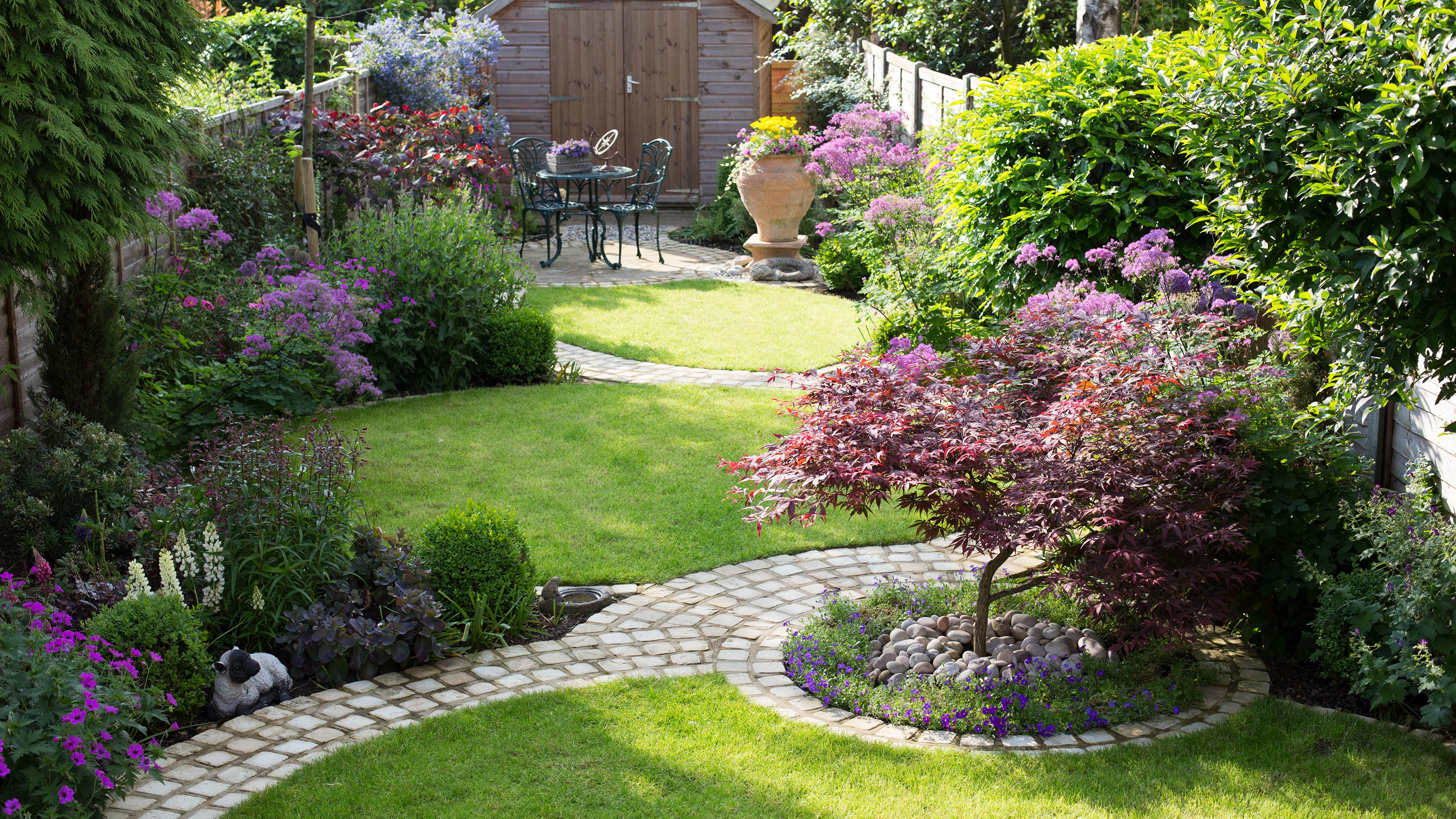

No matter the intended purpose, there are certain dos and don'ts of designing a path which should be taken into account before you start. Garden paths are often classed in two categories, practical and decorative. But with the right design advice there's no reason that they shouldn't be both.
Paths offer a practical hard surface linking key features such as patios, sheds, and gates, and they also offer a great opportunity to add decorative value, draw attention to key features, and inject color and pattern into your outdoor space.
Key functional elements you should take into account are footfall and special access (wheelchairs, prams etc). If you do need your path to perform well on a practical level you will need to consider durable materials and width. Whereas if your path is more to create a sense of journey in your space then you can afford to be more adventurous with the shape and materials you consider.
So if you want your garden path ideas to stand out from the rest, try these key path design tips from our experts.
The essential dos and don'ts of designing a path, according to garden designers
Not giving careful consideration to the dos and don'ts of designing a path is like decorating your living room without thinking of where your furniture will go. And no one will know this more than a garden designer.
So whether you're considering stepping stone ideas or a simple gravel design, make sure you familiarize yourself with these dos and don'ts of designing a path before you get started.
'Do consider how a path will link key garden features'
'When planning a path, there are many things to consider,' says James Scott of The Garden Co. 'For example, is it a main or subsidiary route, which can determine its width and the material you choose. Will the color and shape complement the style of your landscaping ideas and house?
'And how will it direct people around the garden and link different areas, ensuring a smooth transition from one to another? If the path is part of a sloping garden, you will also need to use slip-resistant materials to make it safer when wet or icy.'
Don't forget, you'll have many of the same considerations when choosing suitable materials for your garden step ideas too.
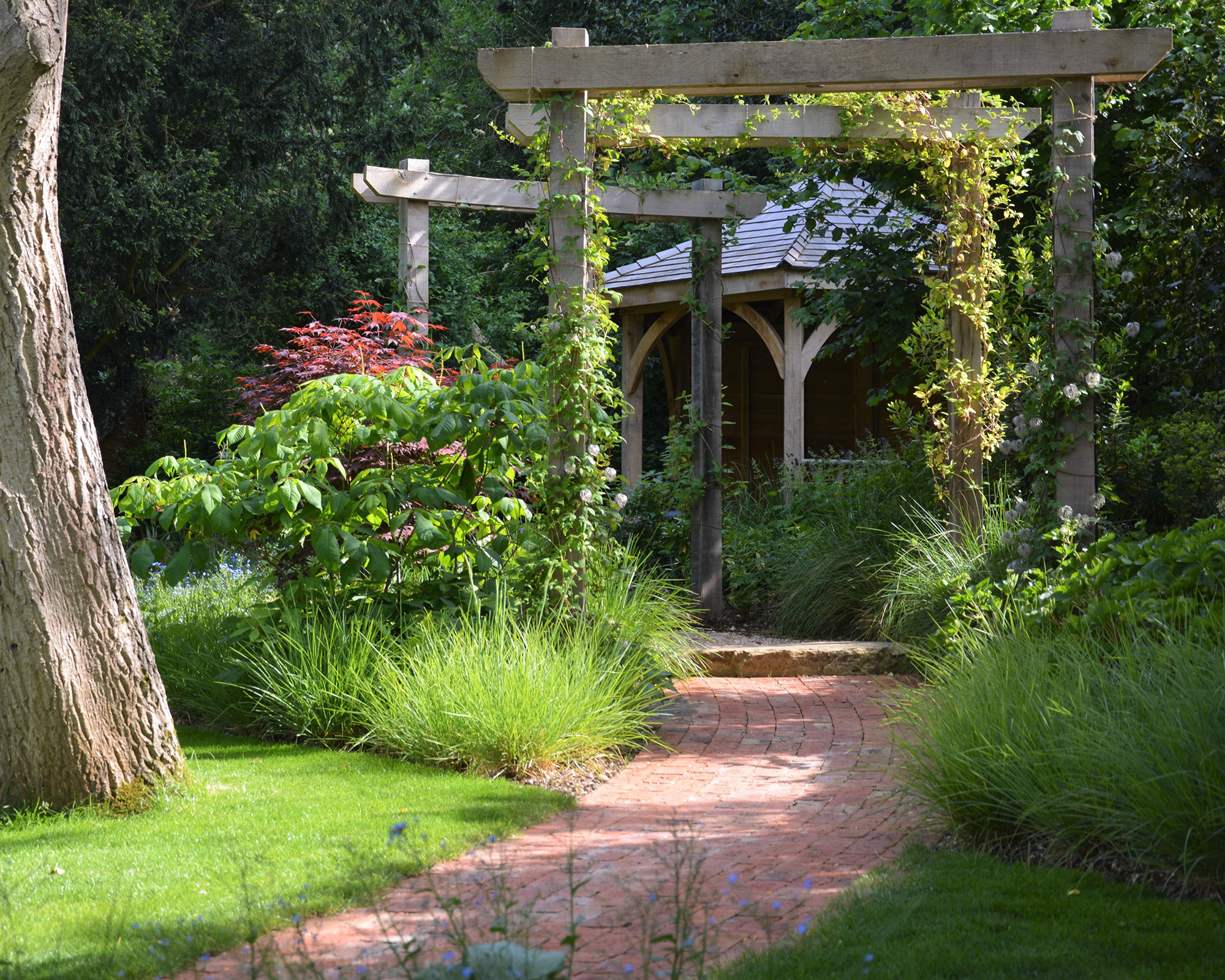
'Make sure your main route through the garden is created with durable materials and is wide enough for two people to walk along it side by side,' says James Scott of The Garden Co
'Don’t position a narrow path too close to a solid boundary'
'A path should connect key features such as a patio with the house or a gate, and you can also use it to define the direction and speed of travel through the garden,' says designer Gianna Utilini of Gianna Utilini Garden Designs.
'For example, a straight path will create a fast route from A to B, while a meandering pathway provides a more leisurely journey, the pace slowed further by installing it between beds that make you stop and look at the plants.
'You can also create a path that directs the eye to a key focal point or beautiful view, or away from an eyesore such as a compost heap. However, avoid narrow paths close to boundaries as they may be difficult to navigate if flanked by a garden fence or wall.'
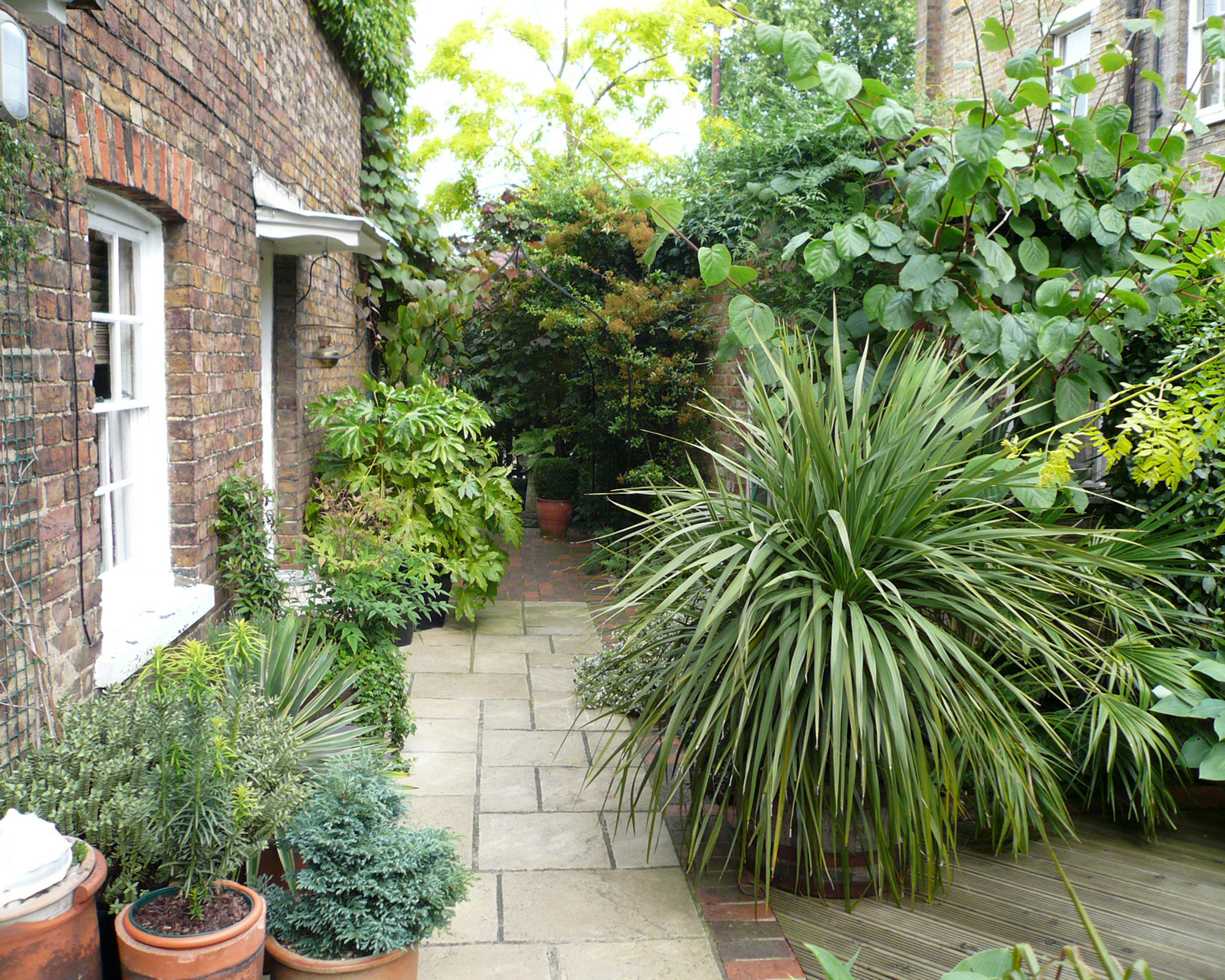
'A straight path for a route from the road up to a front door is often the best option, where direct access is needed,' says Gianna Utilini
'Do make a main path at least a three feet wide'
'A path can be any length, depending on the size of the garden, the features that need to be connected and whether it’s straight or meandering, but there are some tips to follow when planning the width,' says Joanne Willcocks of Gardens by Design.
'Small intimate paths that are used occasionally can be 20-24in (500-600mm) wide, but those that will have higher footfall, such as the route leading to a front porch, should be between 3-4ft (1-1.2m). Also bear in mind planting, which may spill over the edges, and allow an additional 4-12in (100-300mm) width on either side of the path to accommodate them.'
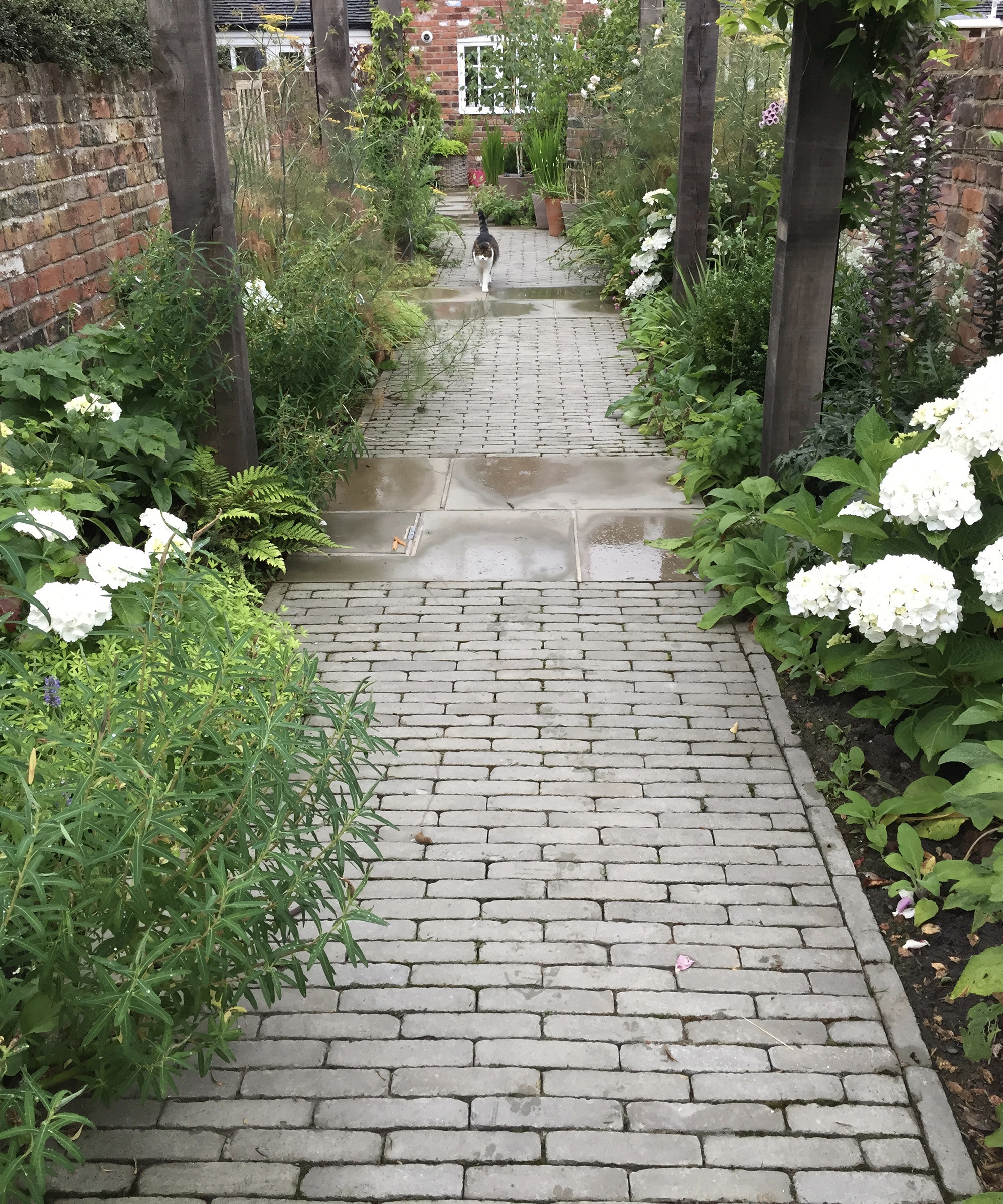
'Ensure a path edged with plants will still be accessible if the stems spill over the sides,' says Joanne Willcocks
'Don’t use more than two different materials'
'When selecting materials, think about practicalities first and then the design effect you want to achieve,' says designer Phil Hirst of Phil Hirst Garden Design. 'For example, a durable material such as stone or porcelain that complements the house walls is ideal for a well-used path close to your property.
'Also consider the maintenance needs: porous limestone and sandstone will absorb dirt and need cleaning regularly, while gravel is more forgiving and a better choice for an informal path leading to, say, a kitchen garden.
'Mixing materials can create an interesting design feature, but keep it simple, using no more than two types. In areas prone to waterlogging, consider an elevated decking boardwalk above the garden, which will allow you access whatever the weather.'
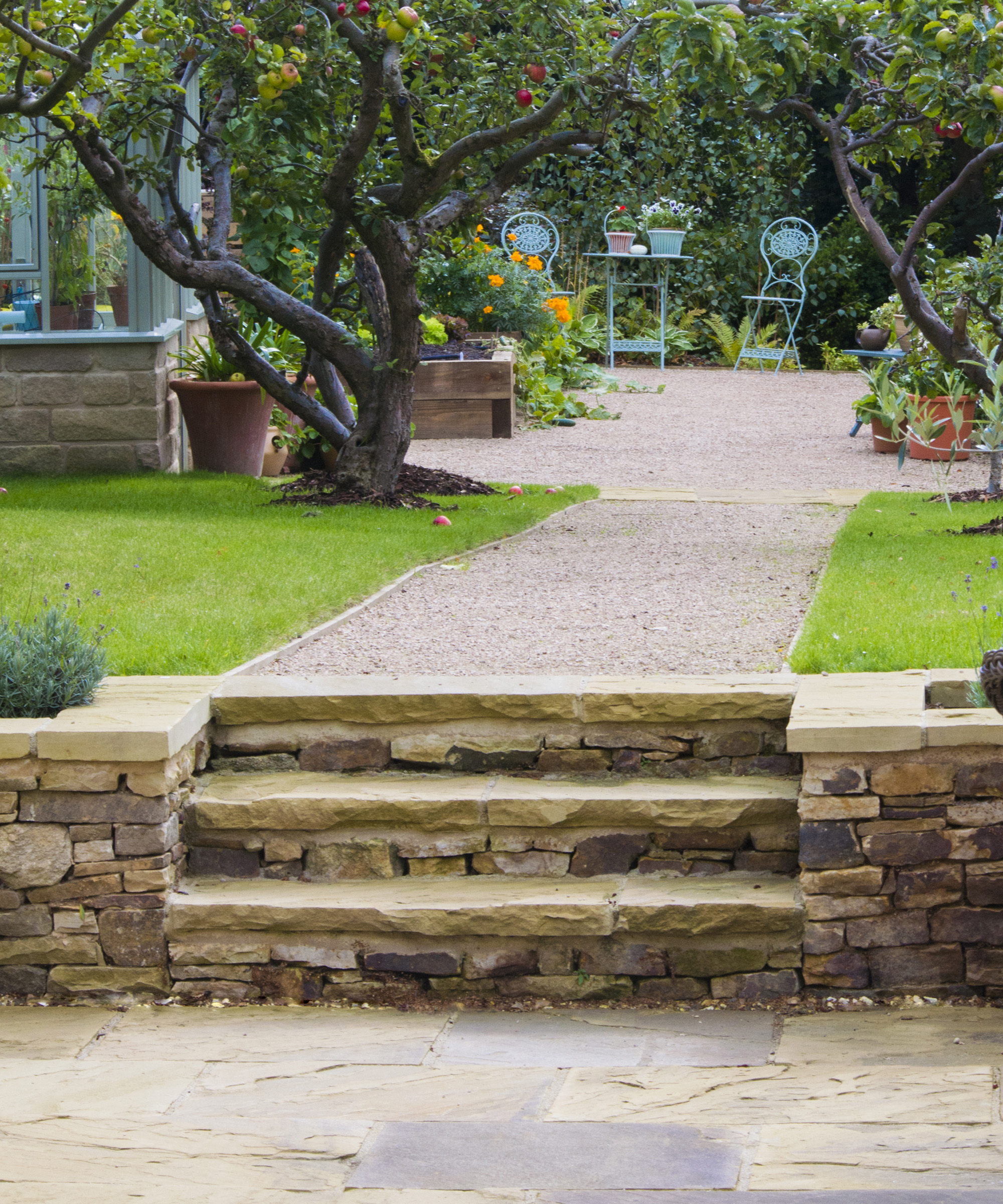
'An inexpensive gravel path that won’t show the dirt is ideal for linking the main garden with a productive area,' says Phil Hirst
'Do use a focal point at the end of straight path'
'Even in a formal garden, think twice before using a straight path linking one end of the garden to the other,' says Fiona Green of Green Tree Garden Design. 'Try including a turn, either at right angles or 45 degrees, to help slow the journey, which will prevent the eye going straight to the end of the garden and is a way to make a small garden look bigger.
'If you do include a straight path, add a pot, statue or bench at the end to create a visual full stop. Curved or circular paths also extend the journey, and can help to distract the eye from an awkward shaped garden, while positioning key features close to the turns adds interest. Just avoid wiggly paths which tend to look overly fussy and can make a garden feel smaller.'
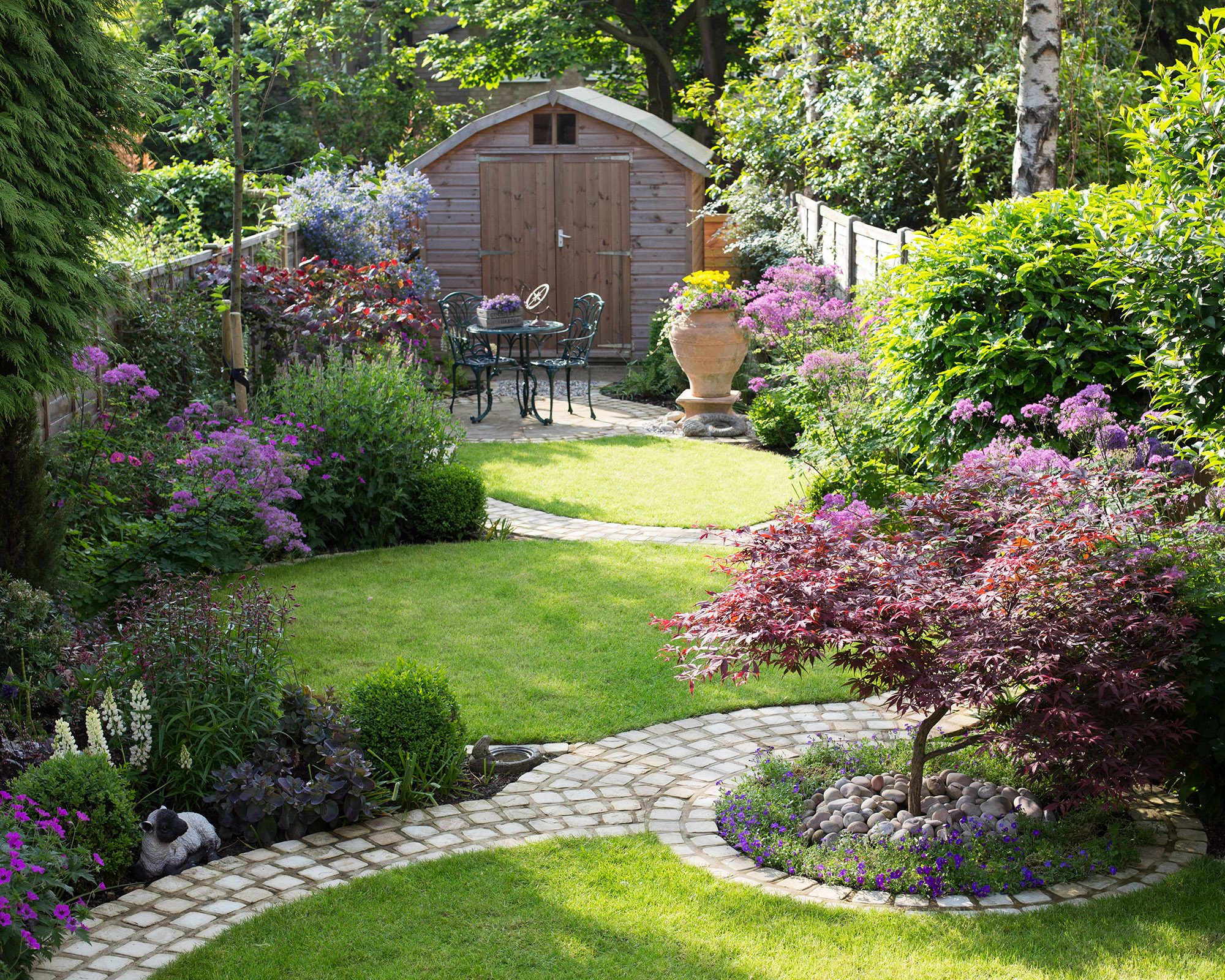
'This curved path creates a meandering journey and distracts the eye from the narrowing shape of this small town garden,' says garden designer Fiona Green
'Don’t use patterned tiles that fight with the planting or house style'
'When choosing a color or pattern for a path, be mindful of its context,' explains Phil Hirst. 'For example, a front garden path laid in Victorian-style glazed tiles will jar with a 1970s property and very colorful materials may detract from the planting.
'My mantra is "less is more" and while a subtle color variation in stones or materials in two complementary shades will add interest, using bright hues or intricate patterns successfully isn’t easy. If you want something a little different, ask a designer to show you a computer mock-up to help you achieve the desired look and avoid expense mistakes.
'Crazy paving can work well in an informal garden and makes good use of recycled slabs, but if you want a professional finish, ask an expert contractor to lay it for you.'

'The simple geometric pattern of this path, created with large slabs and pebbles, adds texture and color and sets off the planting on either side,' says Phil Hirst
'Do use recycled and biodegradable materials for an eco-friendly path'
'Recycled or upcycled materials offer great options for pathways and good choices include used scaffolding boards or part-recycled composite materials, such as decking from Envirobuild,' says garden designer Amelia Bouquet of Amelia Bouquet Garden Design.
'Also consider the composite lumber used for the substructure of a deck, which makes a really interesting modern or rustic garden idea, due to its slightly charred texture. Treat scaffolding boards with an eco-friendly wood preservative to deter rot, and ensure they are not in direct contact with the soil.
'For a flood-resistant pathway, try clay pavers. Lay them on a sub-base of free-draining sharp sand to make your path permeable, with an edging set on a mortar base for stability. You can include ground cover plants such as Mexican fleabane (Erigeron karvinskianus) or thyme between sections of paving to absorb rainwater run-off and prevent flooding.'
You can find more eco landscaping ideas in our dedicated guide.
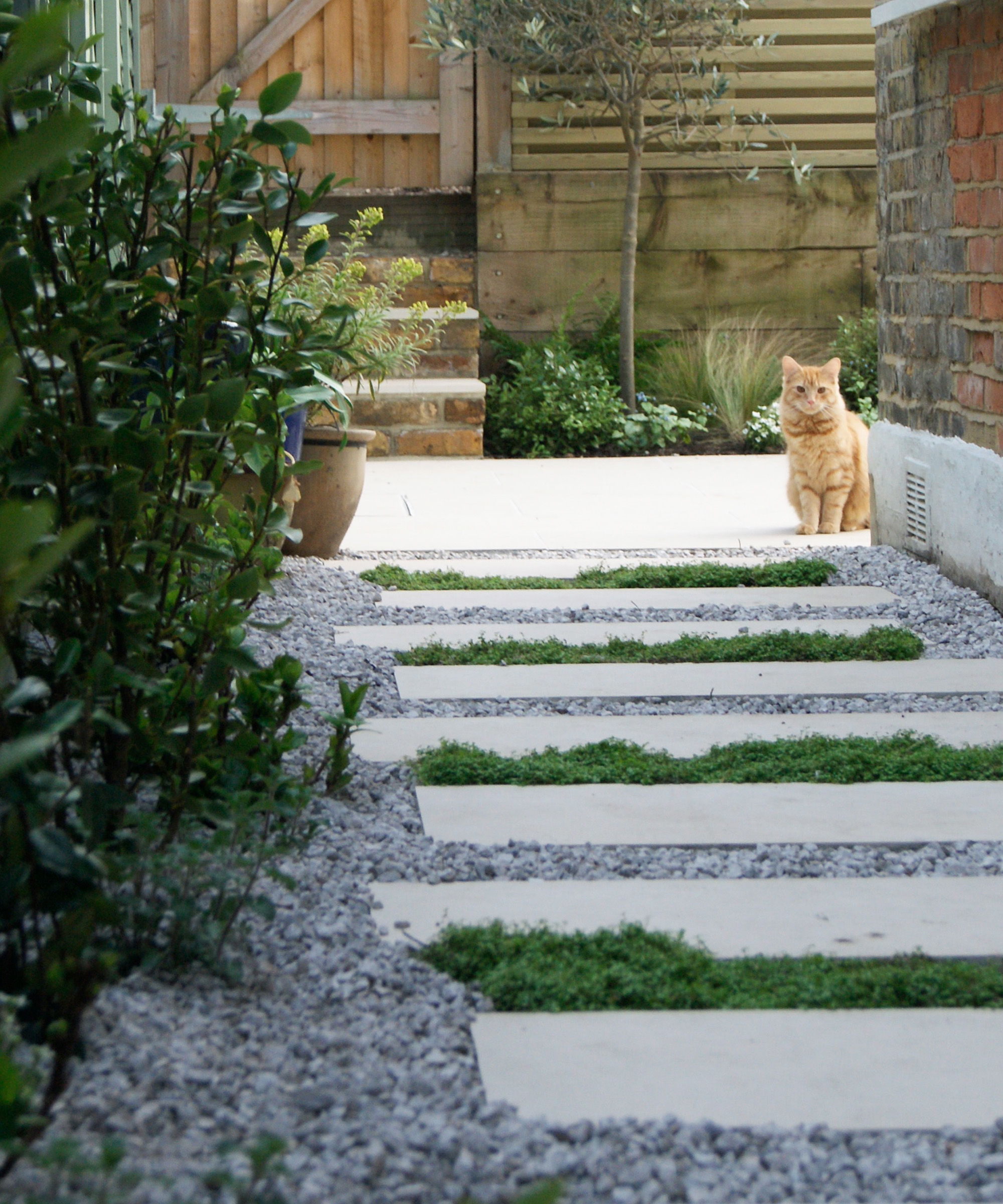
'Combining paving with gravel chips and planting creates a permeable path to prevent flooding,' says Amelia Bouquet
'Don't forget to edge gravel paths'
'Not all paths need an edge, as the paving itself can form its own solid boundary,' says Joanne Willcocks. 'But if you have gravel or grass, an edge can help to define the route. Metal garden edging ideas are commonly used for grass paths, or you can lay bricks or tiles on a mortar base to create an edging that’s slightly lower than the grass, allowing you to mow straight over it for a crisp finish.
'To prevent gravel from migrating into borders, try a core gravel stabilisation system, which is a honeycomb-shaped grid that helps keep the stones in place – Core Landscaping Products offers an eco-friendly system made from recycled plastic.'
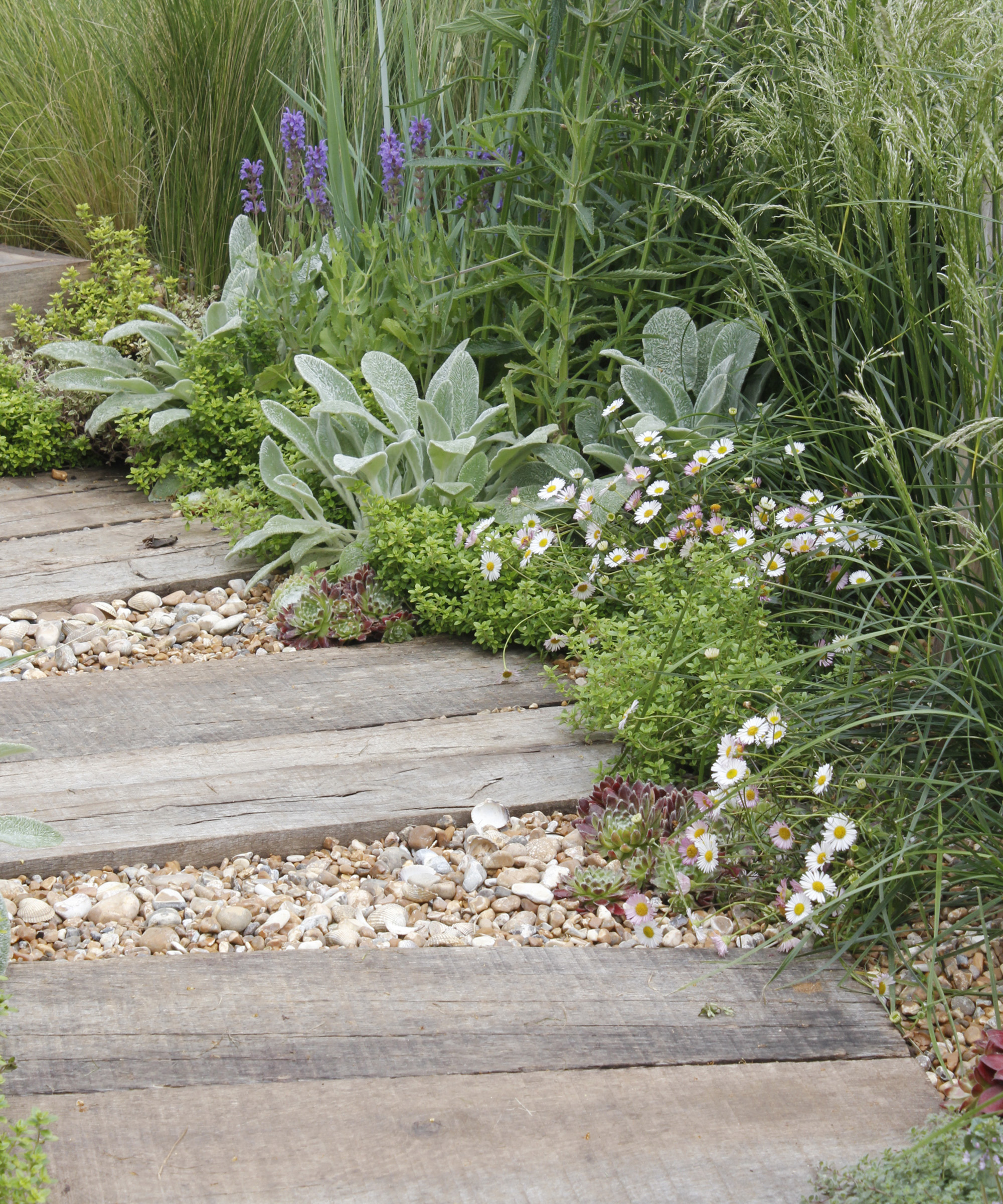
'Timber boards and the surrounding planted edges help to keep the gravel in this path in place,' says Joanne Willcocks
'Do opt for a non-porous porcelain path to minimize maintenance'
'Reduce maintenance by using a non-porous material such as porcelain to create a smart contemporary path that shrugs off dirt. For a more rustic effect, try mixing the paving with gravel or planting,' says Amelia Bouquet.
'Another option for low-maintenance landscaping is self-binding gravel, which is made of stones of different sizes compacted together to form a weed-free, semi-permeable surface. Any paving laid on sand will inevitably require some weeding, but to save time and damage to the environment you could embrace a wilder look and allow a few weeds to pop up in the cracks.
'Try to avoid chemical weedkillers which can poison the environment and don’t offer a permanent solution – pulling up weeds is just as effective and often quicker.'

'Self-binding gravel creates a weed-free naturalistic-looking path ideally suited to an informal flower garden' says Amelia Bouquet
'Don't feel you have to use expensive materials everywhere'
'The most expensive paths tend to be made of natural stone, due to the cost of the material itself and also because it’s labor intensive to install,' explains James Scott . 'Small units such as stone setts and bricks can also be expensive and take longer to lay.
'To keep down costs, try using high-quality paving ideas on paths that will be seen from key vantage points and opt for cheaper materials such as gravel on routes further away from the house or for secondary paths. Also look at your existing path or patio to see if you can recycle the materials, or search freecycle websites for used paving.'

'Check freecycle websites for used materials to make a crazy paving pathway in an informal setting,' says James Scott
'Do use clean lines to emphasize a formal or contemporary style'
'Straight paths made from stone or porcelain pavers are often used to emphasize a formal or clean, modern garden style, while more rustic materials such as bricks, gravel or grass are ideal for cottage garden path ideas,' says Gianna Utilini.
'Take a picture of your plot from an upstairs window and envisage how a path could enhance the style, perhaps using two routes that cross in the centre of the space for a formal look. Likewise, how would a snaking path work and which features could it connect in an informal garden? Brick pavers laid lengthways along a path can emphasize the direction of travel too.'
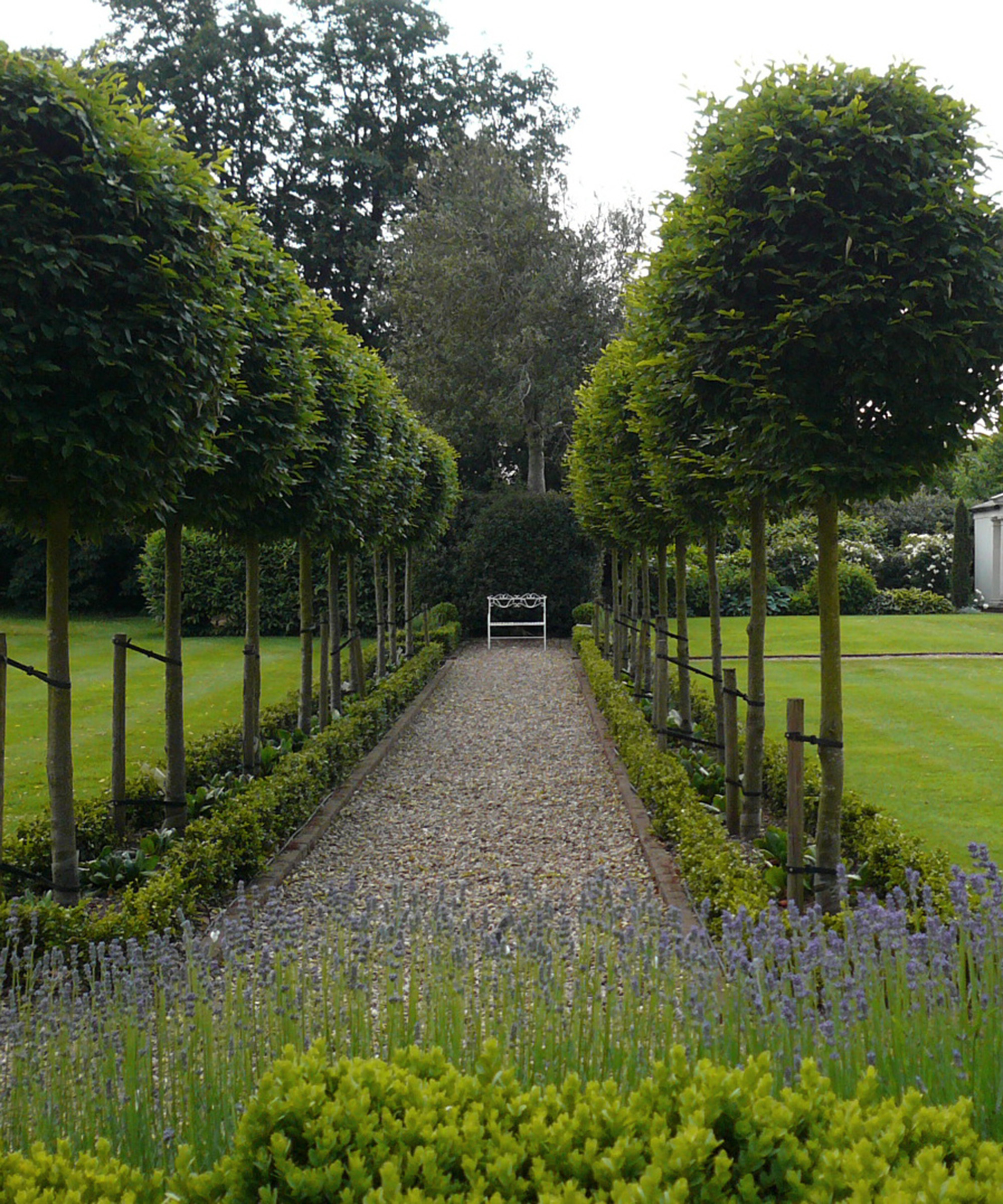
'The straight lines of this path, edged with a short avenue of trees, emphasises the formality of the design,' says Gianna Utilini
'Don't choose grass for a main path'
'Only choose grass for an infrequently used path or it will soon become a muddy track,' says garden designer Fiona Green. 'Buy a tough grass mix and consider sowing it into a honeycomb grid to help make the path more robust, and avoid slopes, as grass is slippery when wet.
'However, despite the cons, there’s nothing more beautiful than a mown grass path through an area of spring bulbs or wildflower meadow.'

How do you choose a shape for a garden path?
In a formal layout, paths tend to be straight, well-directed and potentially dull, but this is avoidable by either staggering the path with miniature courtyards linking each section, or by inspired planting along the way.
Informal paths tend to curve, enticingly leading the eye towards a focal point or hidden area of the garden.

Curved pathways can create a sense of journey
How wide should a path be?
Depending on whether your garden path is purely decorative or needed for practical reasons will determine what width your garden path should be.
When it comes to the dos and don'ts of designing a path, any pathways used for wheelbarrows, lawn mowers or pushchairs should be a minimum width of 3 feet, but in terms of accessible garden design where you might require wheelchair access, they should be wider still.

Zia Allaway is a garden book author, editor, and journalist, and writes for a range of gardening and women’s magazines, including Easy Gardens, Homes & Gardens and Livingetc, as well as The Guardian and The Daily Telegraph newspapers. She has also written books for the Royal Horticultural Society and Dorling Kindersley publishers, including Eco-Gardening, Compost, Low Maintenance, Practical House Plant Book, Practical Cactus & Succulent Book, Indoor Edible Garden, What Plant Where, and the Encyclopedia of Plants and Flowers.
